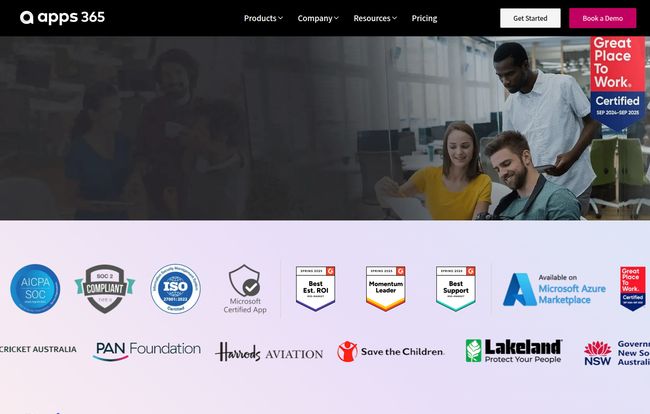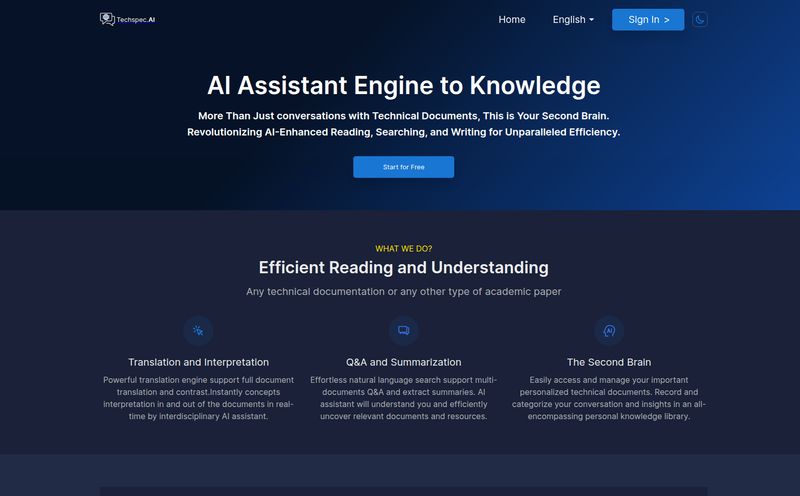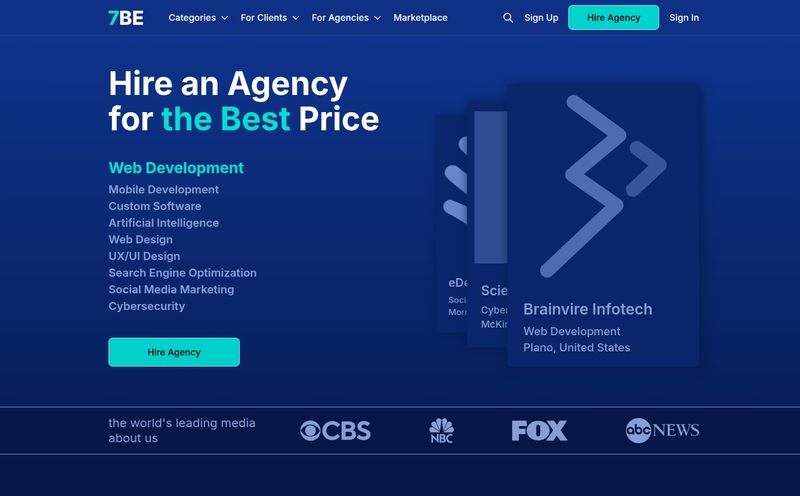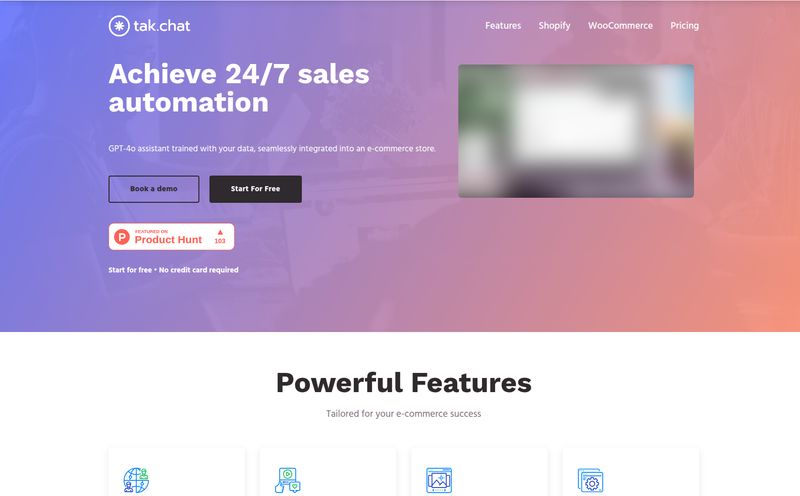If you’re running a business or a department, your world probably lives inside Microsoft 365. It’s your email, your chat, your file storage... your digital everything. But then comes the messy stuff. Onboarding new hires. Tracking time off. Managing support tickets. Suddenly, you're juggling a dozen different spreadsheets, a clunky third-party tool that hates Teams, and a mountain of email chains. It's organized chaos at best.
I've seen it a hundred times. Companies spend a fortune on the M365 license and then try to duct-tape the rest of their operations together. It’s a pain. So when I stumbled upon Apps 365, my curiosity was definitely piqued. They claim to offer a suite of business and HR apps that live natively within the Microsoft ecosystem. No more weird integrations. No more context switching. It sounded almost too good to be true.
So, I did what any self-respecting tech and traffic nerd would do: I dug in. Is this the missing piece of the M365 puzzle, or just another app in a sea of options? Let's find out.
So What Is Apps 365, Really?
Think of it like this: Microsoft 365 is the house you've already built. It has solid foundations—Outlook, Teams, SharePoint. Apps 365 is like buying perfectly-sized, high-quality, pre-built furniture designed specifically for the rooms in your house. Instead of trying to build a custom desk from scratch (a custom Power App) or cramming in a piece of furniture that doesn't quite fit (a third-party SaaS), you get something designed to work from day one.
In technical terms, Apps 365 provides a whole catalog of business and HR applications built directly on MS Teams, PowerApps, and SharePoint. This means they plug right into the systems your team already uses every single day. The goal is to take all those messy, manual processes and give them a clean, professional, and integrated home.
A Look at the Apps 365 Toolkit
This isn’t just one tool; it's a whole collection. And they cover some of the biggest pain points for any growing team. I won't bore you with a giant list, but let's talk about the heavy hitters.

Visit Apps 365
Taming the HR Beast
HR is ground-zero for administrative headaches. Apps 365 seems to know this well. They have tools for Employee Onboarding, which is a godsend if you're tired of sending 15 different emails to every new hire. Their Time Off Manager and Timesheet 365 aim to put an end to the endless back-and-forth of vacation requests and logging hours. They even have apps for Performance Management and Recruitment Management, centralizing processes that are often scattered across documents and folders. It’s about creating a single source of truth for your people-ops, right inside the platform where your people actually work.
Streamlining Your Daily Operations
Beyond HR, there are the tools that just keep the business running. Their Helpdesk 365 is a customizable ticketing system. I can't tell you how many clients I've seen trying to manage IT or facilities requests through a shared email inbox. It’s a nightmare. A proper ticketing system can change everything. They also offer Asset Management 365 (for tracking laptops, phones, etc.) and CLM 365 for contract management. These are the unglamorous but absolutely critical functions that, when done poorly, can bring productivity to a screeching halt.
Let’s Talk Money: The Apps 365 Pricing
Okay, this is where I was pleasantly surprised. I've noticed a trend where platforms hide their pricing behind a “Book a Demo” wall, which always feels a bit… cagey. And for a while, it seemed Apps 365 was in that camp. But they’ve since put their pricing right out there on their site, and I appreciate the transparency. It's a modular, per-app, monthly subscription model.
This approach has its pros and cons. The great part is you only pay for what you need. Just need a helpdesk? You're not forced to buy a massive HR bundle. This is brilliant for smaller teams or departments. Here's a quick look at some of their pricing:
| Application | Monthly Price |
|---|---|
| Helpdesk 365 | $19 |
| Timesheet 365 | $49 |
| Employee Onboarding 365 | $149 |
| Asset Management 365 | $199 |
| Contract Management (CLM) 365 | $29 |
Note: This is just a sample. Prices might change, so definitely check their site for the latest info.
On the flip side, if you need 5 or 6 of these apps, the costs can add up. You'll have to do the math to see if a bundle from another provider would be cheaper. But honestly, the value of true, native M365 integration is hard to quantify. It often pays for itself in user adoption and reduced training time.
What Genuinely Impresses Me
I see a lot of software. Most of it is fine. Some of it is terrible. It's rare that I get genuinely excited, but a few things about Apps 365 stand out.
First, the Microsoft symbiosis. I can’t stress this enough. This isn’t a tool that connects to M365 through a weak API. It’s built on M365. This means the user experience is more cohesive, the security is inherited from your Microsoft setup, and the deployment (via Azure Marketplace and AppSource) is straightforward for any IT admin worth their salt.
Second, that little SOC2 Type II Certified badge. Don’t just scroll past this. For anyone handling sensitive employee or business data, this is huge. It's an independent audit that verifies they have serious security controls in place. In a world of constant data breaches and with regulations like GDPR, this isn't just a nice-to-have; it's a must-have for peace of mind.
The Potential Sticking Points
No tool is perfect for everyone. It's important to be realistic. The biggest “catch” with Apps 365 is also its greatest strength: its reliance on Microsoft.
I call it the Microsoft Golden Handcuffs. If your company lives and breathes Microsoft, this is fantastic. But if you’re a Google Workspace shop, or use Slack instead of Teams, this is obviously a non-starter. This platform is for companies that are already all-in on the Microsoft ecosystem. Full stop.
There also might be a slight training curve. While it's designed to be user-friendly, any new system requires a rollout plan and user adoption efforts. It's simpler than a completely foreign platform, but don't expect your team to master it overnight without any guidance.
What Real Users Are Saying
Testimonials can be fluffy, but sometimes they cut right to the core of a product's value. I saw a few on their site that felt pretty telling.
"Helpdesk 365 has completely changed our operations. What used to be a chaotic mess of emails, spreadsheets, and sticky notes is now a streamlined, trackable, and efficient system... Our team is more organized and productive than ever."
- Ted Brister, Waste Solutions
When someone says "chaotic mess of emails and spreadsheets," that's a universal pain point. Ted's comment highlights the move from chaos to control, which is the whole promise of a good operational app.
"Employee Directory 365 provided the perfect solution. As a large company with several departments... finding the right contact used to be a challenge. Now, with a searchable, and visually appealing directory integrated with SharePoint, everything is a click away."
- Alexander S., Raymond West
This one resonates with anyone in a company bigger than 50 people. An employee directory sounds simple, but a good one is a massive quality-of-life improvement. Alexander’s point about SharePoint integration is key—it meets users where they are.
So, Who Is This Really For?
After looking everything over, the ideal customer for Apps 365 becomes pretty clear.
You’re a perfect fit if you are:
- An SMB or mid-market company already heavily invested in the Microsoft 365 suite.
- Your HR, IT, or Ops teams are struggling with manual processes and spreadsheet-based systems.
- You value security and compliance and want tools that are vetted (like with SOC2).
- You prefer a modular, “buy what you need” approach over a monolithic, all-or-nothing platform.
It's probably not for you if you're a Google Workspace shop, or a massive global enterprise that needs a deeply customized, multi-million dollar ERP solution from SAP or Oracle.
Frequently Asked Questions
Is Apps 365 a standalone platform?
No, and that's its main feature. It's a suite of applications that are built on and operate entirely within your existing Microsoft 365 environment, specifically using SharePoint, PowerApps, and MS Teams.
Can I buy just one app, like the Timesheet Manager?
Yes. The pricing is modular, meaning you can pick and choose the specific applications you need and pay for them individually on a monthly basis.
How secure is my company's data with Apps 365?
Very secure. They are SOC 2 Type II certified, which is a rigorous, third-party audit of their security, availability, processing integrity, confidentiality, and privacy controls. This is a high standard for data security.
Does it actually work inside Microsoft Teams?
Yes, absolutely. The apps are designed to be fully integrated with Teams, allowing users to access them without leaving the application they use for communication and collaboration all day.
Is there a free trial available?
Yes, the website mentions a "14 days risk free trial" and the option to "Book a Demo." This is a great way to test drive an app and see if it fits your workflow before committing.
My Final Verdict on Apps 365
In the crowded world of SaaS, Apps 365 has carved out a very smart niche. Instead of trying to pull you into a new ecosystem, it dives headfirst into the one you’re already in. It’s not trying to reinvent the wheel; it’s just making the Microsoft-powered car you already own run a whole lot smoother.
If your team is struggling to manage core business functions and you're already paying for Microsoft 365, you almost owe it to yourself to check this out. You're sitting on this powerful platform in SharePoint and PowerApps—Apps 365 just gives you a way to harness it without needing a team of developers. It might just be the thing that finally lets you close all those chaotic spreadsheets. For good.
Reference and Sources
- Apps 365 Official Website (Note: This is the presumed official URL based on the branding)
- Microsoft AppSource
- Understanding SOC 2 Certification (AICPA)
- An Introduction to Microsoft PowerApps



